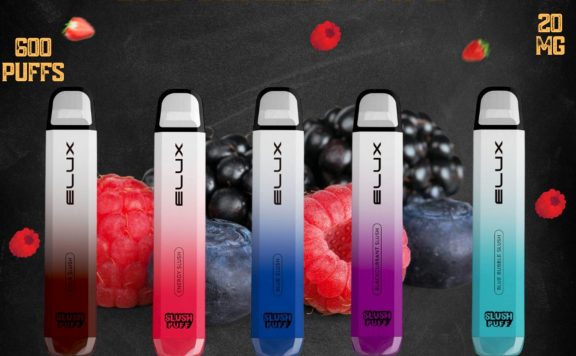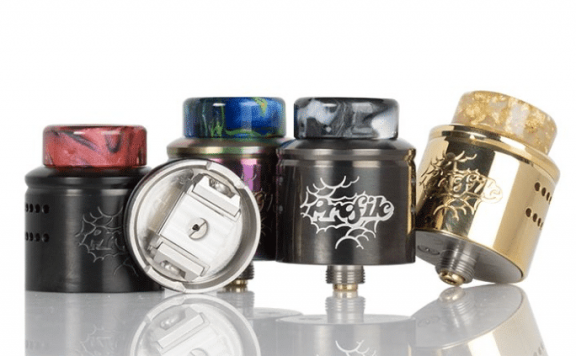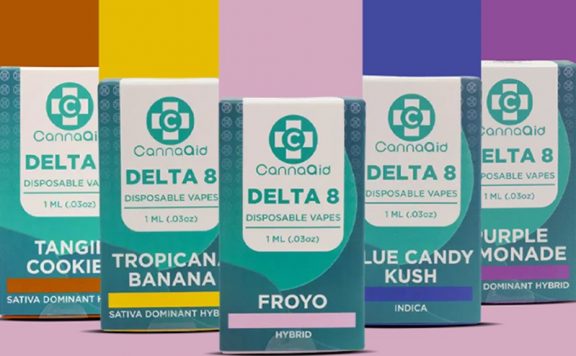When you are picking out vapes, especially from online vape shops, have you ever thought there is a chance of buying counterfeited vapes or fake vapes? Even though you are being extra careful about the vape stores and reading their introduction and “authenticity” thoroughly, there are the voices in the head: is this website legit? what if they scam my money? One more thing is that customers might not even notice they have purchased fake products sometimes. It has caused vape brands’ concerns on those counterfeits, and they have come up with various approach to avoid such regretful situation both to brands themselves and to customers.
Vape is something we put in mouth, we use it to help us quit smoking and get healthier lifestyle rather than hurting us more. My Vape Review will help you understand the harms brougt by fake vapes, and ways to recognize them.
Table of Contents
The Harm of Fake Vapes
Before vapes are approved and released to the market, there are a series of tests and examinations needed to be done, from the functionality test such as storage temperature test, to the reliability test like pressure test, humidity test, transporting simulation, and to the most important chemical safety test of the e-liquid.
Yes, fake vapes can be cheap, yet dangerous. Since what the manufacturers of fake vapes care the most is their profits, asking them to do a round of tests seems to only expand their budgets and shorten their earnings. Customers as well as vape brands won’t know if fake vapes will undergo these tests. Things can be really severe in this context. Chemical safety test is especially important to products that will go into mouth and body like vapes.
E-liquid
E-liquids, as the fuel of vapes, is made of propylene glycol, vegetable glycerin, nicotine, and natural and artificial flavorings. The first uncertain thing about fake vapes is that we don’t know the source of their e-liquids. Other than that the source of e-liquid is important, it is crucial to conduct test on the density of carbonyl compounds such as formaldehyde, nitropropane, and heavy metal like iron (Fe), lead (Pb), etc. These chemicals can be harmful to human body if the doses exceed the safe range. For example, inhaling formaldehyde in the air indoor at level below 0.125mg/m3 is safe. People might feel some sensory irritation if the level is above the number when exposing to and inhaling the air the environment for a long time. In vapes, the safe range of formaldehyde is below 2ug/100puffs, which means only if you vape in 6,250 puffs in a day, the level of formaldehyde you inhaled can equal to that in 1m³. Hence, in the chemical safety test, including aerosol test, an e-liquid is safe to go to the market only if the volumes of these chemicals are within the safe range or can’t be detected.
Battery
Battery safety is another issue we can’t ignore. If you search “vape battery explosion” on Google, you’ll get about 1.5million results. Vape usually uses lithium battery to have thinner and smaller battery size with longer battery capacity. The battery supports the atomizing work and other functions like indicators and screens. If the battery is working too hot, it might explode (It’s also a hidden trouble for unregulated mods). There are hundreds of reasons cause battery explosion, such as mis-operation, inappropriate storing, and poor quality, etc. Besides all the safety instructions of how you should maintain and operate your vapes, buying them from reliable sources and making sure they are from authorized dealers are important, too.

Most vapes with built-in batteries use lithnium batteries. 18650 is lithnium battery, too. The three main substance of lithnium batteries are Nickel (Ni), Colbat (Co), and Manganese (Mn). Co can improve battery’s performance on power discharge, while Ni can improve battery’s power density. However, Co is a very expensive chemical. As a result, cheap batteries might contain very low Co content and the battery can’t last long.
Cotton

Cotton delivers rich taste and it’s been loved by vapers for many years.Cotton works as the agency between e-juice and heating system of a vape. Cotton is the most used wicking material among vapers. A good cotton absorbs e-juice evenly and will offer you the smooth vapor and flavor. A bad cotton might result in flavor loss, burnt flavor, and even damage your device. Good cotton coil is usually untreated cottons and is made of organic cotton. It is also food-safe.
How to Avoid Fake Vapes?
- Check the online stores’ authenticity
Payment safety: Check if the website has been recognized as a safety site. For USA shoppers, you can scroll down to the footer of the vape stores and check if they have put certificate or proof.

- Search for others’ comments
If you are feeling weird about a online vape shop, you’d better search your question on Google and there might be people who have the same question as you do.
- Compare the price
Don’t be tempted by super good prices. Check the MSRP on brands’ websites and compare the prices on different e-commerce platforms. Generally, the price of vapes can be low if there is an event going on. You can check vape deals sites for coupons and deals.
- Buy from vape brand’s official sites
The easist way to avoid fake vapes is to buy directly from vape brand’s official website. Most of them have online stores, such as Smok’s smokstore. Also, you can use the store locator to find vape shops near you.
- Don’t buy from personal buyers
Don’t buy from personal buyers. It’s hard to check their credibility and resources and the payment can be an issue, too. It’s hard to protect your own benefits.
- Ask the vape brands
Contact the after-sale department and ask them if the online shop is their authorized seller. If you’ve already bought suspecious product, you can also contact them to double check and rise their attention on counterfeits.
- Steps to Recognize Authentic Vapes
- Check if the vape you buy has anti-counterfeit label on the back/side of the package or there might be card inside of the box.
- Scrap the anti-counterfeit label and go to or scan the barcode to verify your product.







